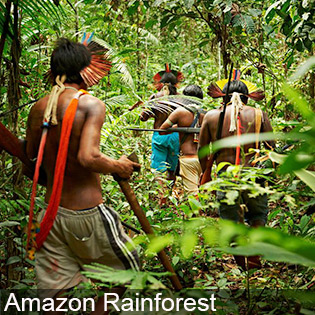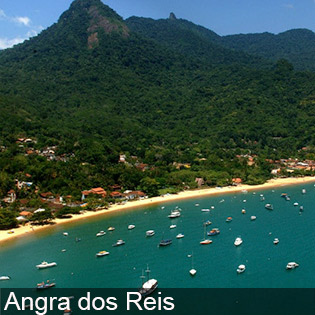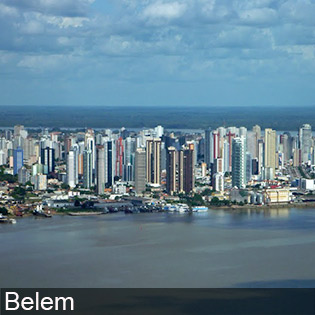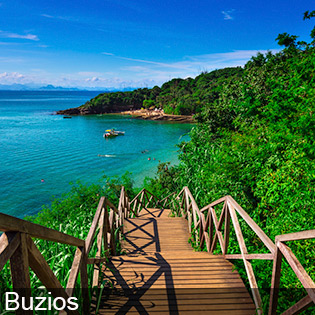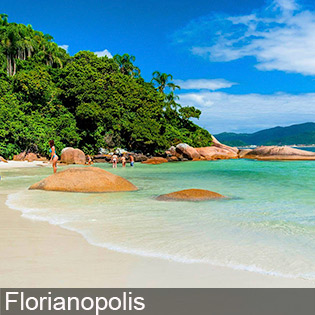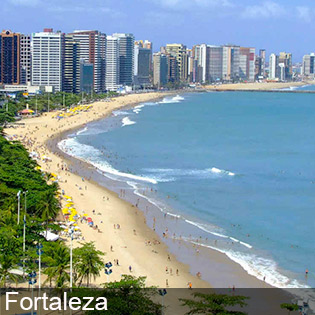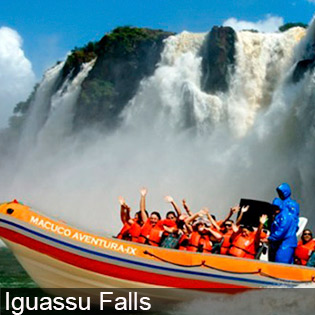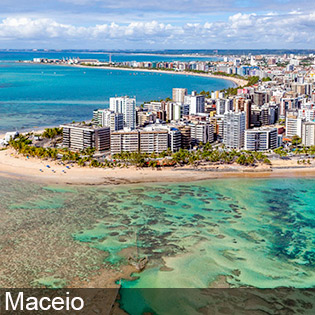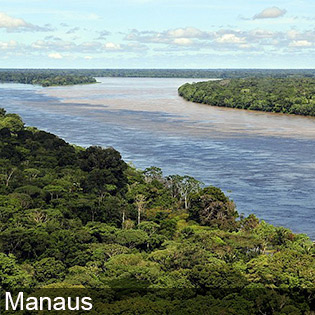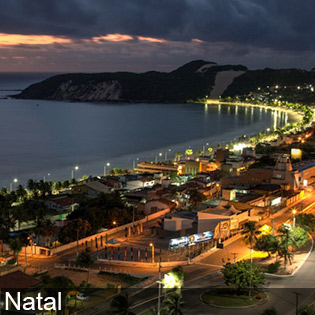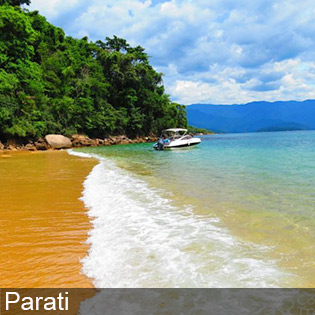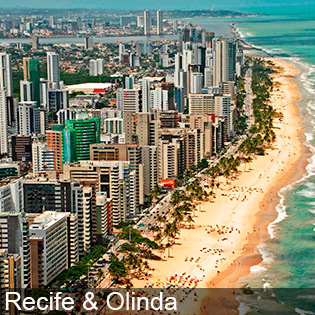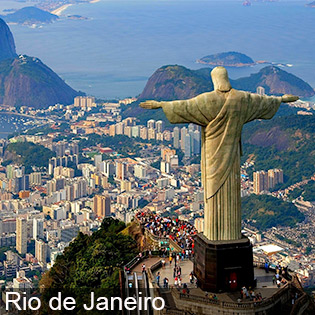BRAZIL: Region by Region
Welcome to our Region by Region section. This section is intended to provide more details of each county’s regions, highlighting the region’s attributes and points of interest, including what to see, best time to see it; suggested length of stay, and more. Moreover, this section provides the independent traveler the opportunity to consider what cities and regions interest them most. While our Pre-designed tour menu provides a wide range of suggested popular tour programs, the Region by Region sections allows you to custom-design the tour of your choice.
Amazon Rainforest
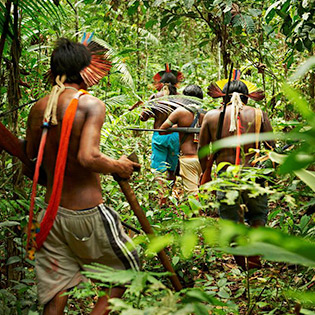
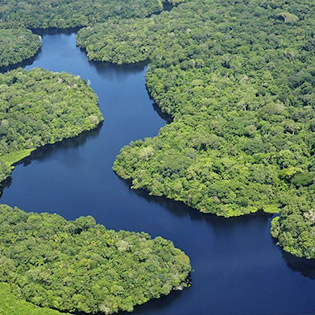

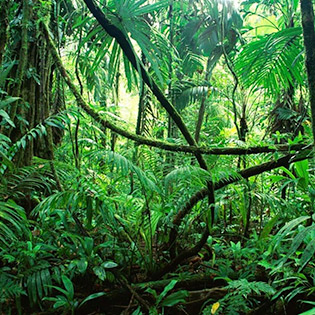
Overview
Named after female warriors of Greek mythology, the Amazon is a place of mythical status. The Amazon rainforest, covering much of northwestern Brazil and extending into Colombia, Peru and other South American countries, is the world’s largest remaining tropical rainforest where more than one third of the earth's fresh water flows and is home to an amazing biological diversity of flora and fauna with many unique animals of the Amazon rainforest. The Amazon's river, lakes, streams and marshlands support over 2200 species of fish and more than 250 species of amphibians and reptiles. Tropical rainforests are home to half the plant animal species on Earth. The river basin contains a wider variety of tropical rainforest plants and rainforest animals than any other tropical rainforest biomes in the world. About one quarter of all the medicines we use come from rainforest plants.
Recommended Stay
Three to four nights by boat or Jungle Lodge
When to go
Due to its proximity to the Equator, Manaus features a tropical climate with hot and humid conditions ‘year round. The rainy season extends from December to May. Nevertheless the area may be visited year ‘round since the rainforest transforms itself from season to season thus creating different possibilities for activities, tours, and flora and fauna observation.
Highlights
- Meeting of the Waters: Boat tour to see this unique phenomenon, where the Rio Negro and Solimoes Rivers meet to join the Amazon.
- Jungle Experiences: Spend two or more nights in a jungle lodge and participate on jungle treks.
- Jungle cruise: boat tours, fishing, wildlife observation, night photographic safaris and much more.
- Visit Anavilhanas archipelago
- Canopy Bridge Walk to view the jungle from treetops
- Piranha Fishing. ...
- Visit Local Community Visit
- Swimming with Pink River Dolphins
- Kayaking. ...
- Swimming in the Amazon
Angra dos Reis
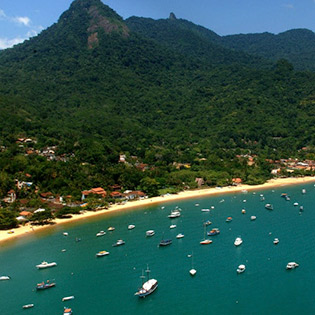
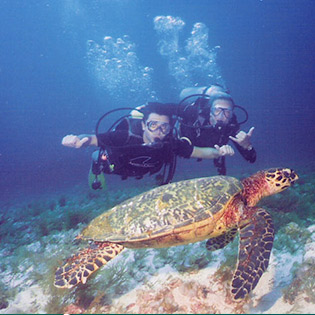
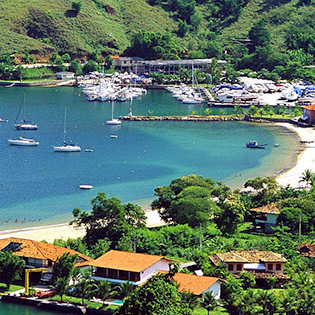
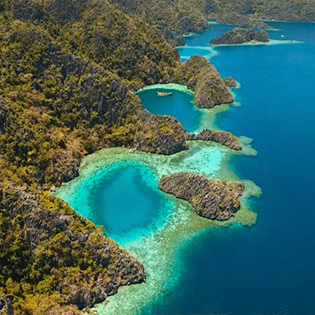
Overview
Angra dos Reis; Portuguese for Creek of the Kings, is a small seaside town located just two hours south of Rio de Janeiro, on Brazil’s Costa Verde (Green Coast). Angra is an archipelago a mere 2 to 3 hour drive from Rio. With over two thousand beaches and 365 islands, misty waterfalls and forest-covered mountains, which cascade down to the emerald sea. Angra dos Reis is a tourist paradise and has a lot to offer in terms of luxury accommodations and vacation homes, making it a popular hangout for wealthy Brazilians as well. Originally an Indian settlement, “Angra” was also site of a small colony, a prosperous port, pirate hideout and sleepy fishing village before being discovered by ecotourism. . The spectacular beaches, plenty of sunshine and interesting historical sites make Angra dos Reis a dream destination.
Recommended Stay
Three to five nights
When to go
Although Angra is a year ‘round destination, it is wise to avoid the winter time (June-August) since temperatures may drop into the fifties and rainfalls are possible.
Highlights
- Boat tours: Sail Angra’s bay visiting deserted islands and dreamlike beaches.
- Water sports: Sailing, catamaran and schooner tours, water ski, surfing, snorkeling, and scuba diving are all popular.
- Ecotourism: The Mata Atlantica Forest offers excellent conditions for ecotourism activities such as hiking, mountain biking, etc.
- Paraty: Discover one of Brazil’s most charming colonial towns.
Belem
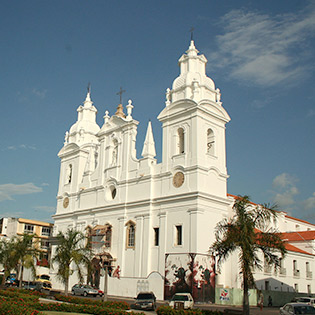
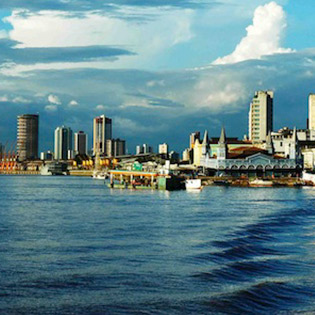
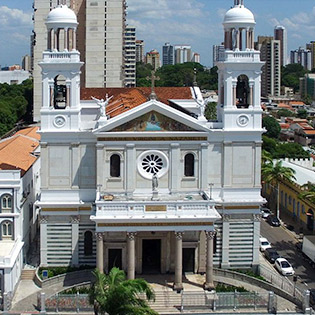
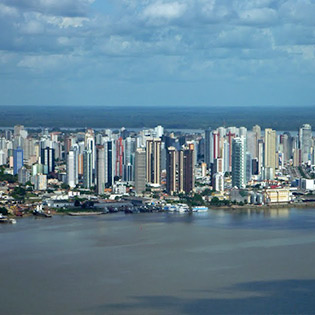
Overview
Belem is one of the world's most fascinating tropical cities and gateway to Amazonia. Here, since 1616, on a branch of the world's greatest river, Belem has grown and prospered while remaining Brazil's most Portuguese city. Highlights include daily riverboat excursions on the Para River estuary to Marajo, the world’s largest freshwater island and an ideal place to watch huge flocks of wading birds, caiman, piranha and other tropical wildlife, and visits to the traditional Ver-O-Peso market, one of South America’s most exotic and vibrant.
Recommended Stay
Two nights
When to go
Belem’s unchanging, year ‘round weather is tropical, warm, and usually predictable with sunny mornings, hot mid-days, and pleasant evenings. If there’s any rain it will most likely come in the afternoon. Travelers should avoid February and March as heavy downpours occur often during these two months.
Highlights
Belo Horizonte


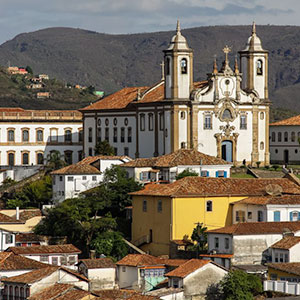
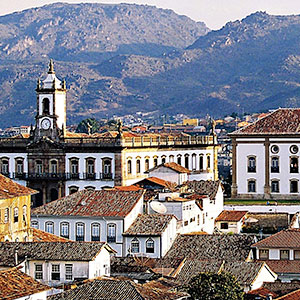
Overview
Belo Horizonte, the capital of the State of Minas Gerais, the 3rd largest metropolitan city in Brazil and a place of intensive cultural and economic activity. The city was designed to replace capital for Ouro Preto, modelled after Washington D.C in the United States. The city's design was influenced by the famed Brazilian architect Oscar Niemeyer, who also designed Brasilia, Brazil’s Capital City. Belo Horizonte is the gateway to several charming and historic colonial cities including Ouro Preto, Tiradentes or Mariana, and Diamantina. Unfortunately this charming colonial historical region does not make it to the tourist circuits of a Brazilian vacation.
Recommended Stay
Three to five nights
When to go
Although Belo Horizontal and nearby historical cities like Ouro Preto can be year-round destinations, it is wise to go between April and September when the weather is cooler and drier. The summer months – December to March are typically high season for the rest of Brazil but in Minas Gerias these are wet with the highest humidity.
Highlights
- Museums and the Arts
Belo Horizonte is a cultural city, which is home to both a contemporary and a classical dance center. The municipal Palace of Arts contains galleries of artworks, three theaters and a cinema, and hosts dance, theatrical and opera performances throughout the year. The city also boasts a number of museums, which include the Museo Mineiro, showcasing the history of the province, and the Museum of Arts and Crafts, which is in the city's old train station. - Parks and Gardens
Belo Horizonte boasts many parks and green areas, including the Botanic Gardens and the Municipal Park in Pamphula - Colonial cities nearby Belo Horizonte
Most famous of the towns is Ouro Preto, Streets of whitewashed 18th-century houses with deep-blue or yellow window frames line steep and winding streets leading to lavishly decorated churches with Manueline façades and rich gilt interiors. Time permitting add Mariana, Tiradentes, and São João del Rei
Buzios
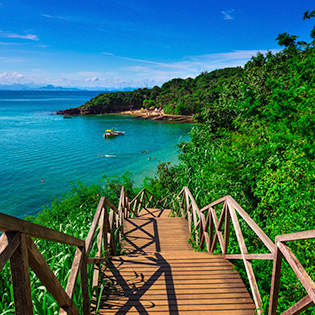
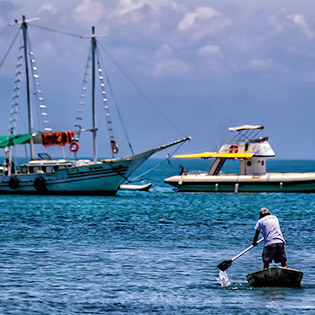
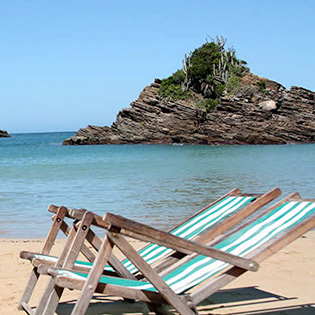

Overview
The small fishing village of Buzios, two hours north of Rio de Janeiro, burst into prominence in the ‘60s, when French actress Brigitte Bardot selected it as one of her favorite vacation spots. Originally an Indian settlement and later used as a pirate hideout and supply point for slave traders, the small town went back to its quiet origins after the decline of piracy and the abolition of slavery. Since Ms Bardot’s discovery, however, Buzios has grown a well-deserved international reputation as a playground of the rich and famous. The inviting town offers more than 20 sandy beaches, crystal clear waters, an all-season climate, lively nightlife, a variety of water sports, and sophisticated boutiques, art galleries and restaurants.
Recommended Stay
Three to five nights.
When to go
Although Buzios is a year round destination, it is better to avoid the winter (June-August) since temperatures may drop into the fifties and rainfalls can be frequent. Visitors should also be aware Carnival is a very busy time in Buzios and reservations must be made well in advance.
Highlights
- Beachcombing: Beaches in Buzios run the gamut, from tranquil coves to long, sandy strips perfect for water sports.
- Water sports: Sailing, catamaran and schooner tours, water ski, surfing, kite surfing, snorkeling, and SCUBA diving are all popular.
- Shopping & Nightlife: Stroll the popular Rua das Pedras, the town’s main pedestrian road, and peruse the chic and exotic shops. Return in the evening and dance the night away.
Florianopolis
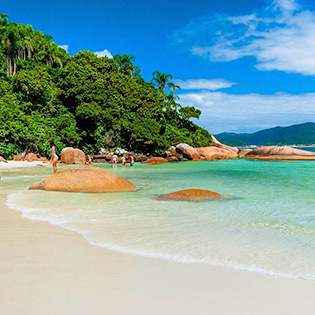
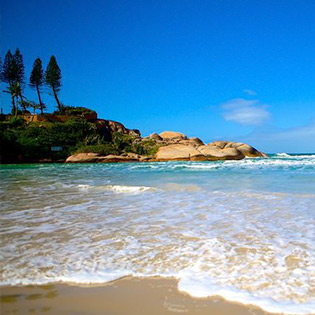
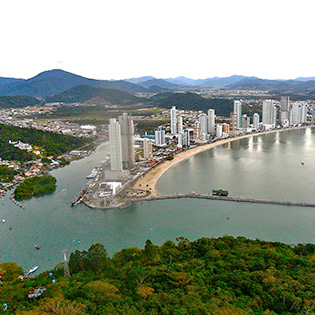
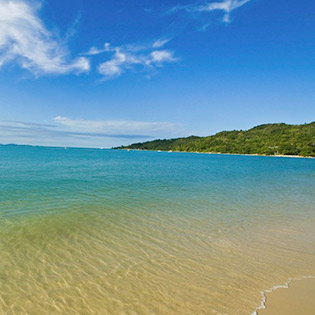
Overview
There are two faces to Florianópolis (Floripa). On the mainland, the industrial zone occupies the districts of Estreito and Coqueiros. Across the bay, the island holds the historic center and the chic district of Beira-Mar Norte. Two picturesque bridges link these halves. Florianópolis is made up mostly of 34mile-long Santa Catarina Island. Vacationing in Florianopolis is an experience unlike any other. Florianopolis, or Floripa as it is affectionately known by locals, is an enchantingly beautiful city located in the South of Brazil. As the capital of Santa Catarina, one of the richest per capita states in Brazil, it has long been known to well-to-do South Americans as a wonderful vacation destination thanks to its unique combination of incredible beaches, great weather, amazing nightlife and friendly inhabitants, all in a setting of unparalleled natural beauty. Florianopolis is also blessed with an organized and extremely safe urban environment, which helps to explain why for several years in a row now it has been named as the city with the best quality of life in Brazil by the local media. It's famous for its beaches, including popular resort areas such as Praia dos Ingleses at the island's northern tip. Its Lagoa da Conceição, a saltwater lagoon, is popular for windsurfing and boating. The Pedro Ivo Campos Bridge connects the island to a mainland commercial district.
Recommended Stay
Two to five nights
When to go
For those interested in beach life and looking for high temperatures, December to March (the high season) is a good time to visit Florianópolis. Unless you are a surf fan, do not go during the Brazilian winter (June to September). The weather in the state of Santa Catarina is influenced by southern winds that moderate temperatures. During the southern hemisphere’s summer, from January to March, average temperatures range from 21 – 28ºC (70 – 82ºF). In the winter months, between June and September, average temperatures vary between 13 – 21ºC (55 – 70ºF).
Highlights
- Historic Center: Definitely, a beautiful and informative part of Florianópolis is the historic center of the city. There, visitors will find a lot of historical buildings, like the Public Market and the Cathedral Metropolitana, as well as beautiful leafy parks, plazas and museums. Visitors will also find there a big range of restaurants, bars, shopping possibilities and accommodation of every type. Simply embark on a pleasant walk through the city and a little bit outside of the historic center and enjoy the atmosphere. You will not regret it.
- A Day at the Beach: Florianópolis is the perfect place for people interested in culture, but also for beach and water sports lovers. This city offers more than 40 beaches spread across the whole island. Some of the best beaches for surfing are Praia Mole and Praia Brava, which is also one of the most beautiful beaches, Also Barra da Lagoa, is perfect for surfing beginners, and Joaquina, where international surfing competitions are held, are worth visiting. Further, there is the Praia Moçambique, lying in a nature reserve, Jurerê, the beach for the rich and famous with some of the best clubs, and Galheta, the ideal place for nudists. Just choose the right one for you, or visit all of them.
- Party time: Florianópolis was declared ‘Party Destination of the Year’ by The New York Times. There are a lot of bars and clubs, and also places near the beaches, which are a mixture of lounge and bar during the day and transform into clubs at night. Everybody will find the right place to have a relaxed evening and watch the sunset, or listen to good music and dance all night long. Do not miss the spectacular nightlife of Florianópolis, it will be an unforgettable time.
- Hercílio Luz Bridge: To get to the island part of Florianópolis everybody has to cross the Hercílio Luz Bridge. It earned its name from Governor Hercílio Luz, under whom the bridge was built as the first fixed connection between the island and mainland Brazil. In 1926, the bridge was opened, after three years building time, and since then it has been the landmark of the Florianópolis. What is special about this bridge is that it is the longest suspension bridge in Brazil, and the second biggest in all of South America.
- Fortaleza de Santo Antônio de Ratones: This fortress is situated on the small island of Ratón Grande and lies in the bay north of the Isle of Santa Catarina. It was built in the 18th century, and served as defence facility, to fund and maintain the occupation of the south of Brazil, and to keep up the Portuguese reign over Colonia del Sacramento.
Fortaleza
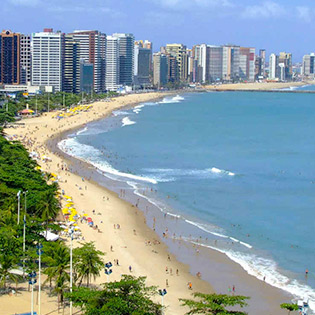

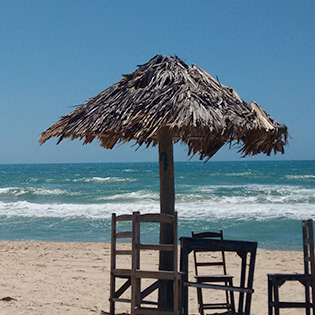
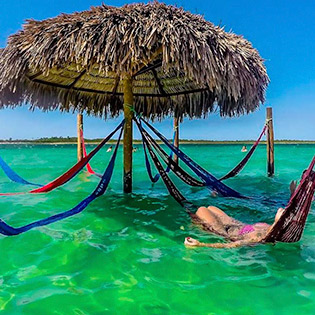
Overview
Fortaleza is the capital of the northeastern Brazilian state of Ceará, one of Brazil’s largest cities, and an economic magnet for people from Ceará and beyond. It’s also a magnet for tourists from Brazil and overseas, who come for its beaches and party atmosphere, and for the spectacular niche beaches punctuated by red cliffs, palm trees, dunes and lagoons, rolling dunes and fishing villages they can get to from here. Fortaleza’s long-standing folkloric traditions are presented in dance performances at the art nouveau José de Alencar Theater, open since 1910. Another architectural highlight is the neo-Gothic Catedral Metropolitana. Centro is the oldest part of town; it is a lively area to wander round by day, with many busy streets full of small stores, though it lacks any specific attractions of note. First beach is Praia de Iracema, a tightly packed nightlife, restaurant and accommodation zone, with no beach worth mentioning. Praia do Futuro, the city's best beach, a clean length of sand stretching some 4 miles along Fortaleza’s east-facing coast, home to large restaurants known as barracas, which serve seafood, beer and cocktails at tables on the sand, and attracts enormous crowds at weekends. And then there’s Jericoacoara, a four-hour drive west from the northeastern city of Fortaleza, easily mistaken for a Saharan desertscape.
Recommended Stay
Two to five nights
When to go
Fortaleza is a year-round destination as the temperatures seldom vary. The hottest months are December, November, and then January with the warmest time of year generally in early February where highs are regularly around 87.4°F (30.8°C) with temperatures rarely dropping below 77.1°F (25.1°C) at night. Typically temperatures range from 23-31 C with rare exceptions. July - November has virtually no rain.
Highlights
- Mercado Central: Like many northeastern Brazilian cities, Fortaleza is famous for its handicrafts, particularly its embroidered white lace textiles. One of the best places in the city to pick up locally made gifts and souvenirs is at the Mercado Central.
- Museum of Ceara: Opened in 1932, the Museum of Ceara was the first public museum in the Brazilian state of the same name. Located in Fortaleza and housed within the former Legislative Assembly in city center, the museum presents the history and culture of the state, including its various indigenous peoples, through its collection of some 12,000 articles and artifacts.
- Jose de Alencar Theater: Just to the west of Fortaleza’s Central Market sits the early 20th-century Art Nouveau-style Jose de Alencar Theater. Construction on the theater began in 1904, but it wasn’t until June of 1910 that it officially opened, named after Fortaleza-born novelist and dramatist Jose de Alencar.
- Besides the 800-seat concert hall, the theater also includes a theater garden designed by Brazilian landscape architect Roberto Burle Marx, an outdoor state and a small annex with another 90-seat theater
- Fortaleza Beach Park: The Fortaleza Beach Park complex is on Fortaleza's coast, an enormous Aqua Park, with waterslides, waterfalls, and an artificial river, although you can choose to base yourself at one of the Park's on-site hotels.
- Praia do Futuro: A clean length of sand stretching 4-mile long along Fortaleza’s east-facing coast, is considered the best city beach, lined by restaurants known as barracas, which serve seafood, beer and cocktails at tables on the sand, and attracts enormous crowds at weekends; fortunately the beach is long enough to accommodate everyone without being overcrowded.
- Canoa Quebrada: Surrounded by pink sand dunes, sandstone cliffs and a winding river, Canoa Quebrada is a laid-back beach town blessed with a stunning, natural environment. While the town has grown with the times, it hasn’t lost that mystical feel that first attracted Italian hippies to settle in the area in the 1970s. People visit Canoa Quebrada for its natural beauty and a healthy dose of the simple life - swim in the aquamarine waters, eat fresh seafood, party at night, and sleep it off on the miles of soft white sand.
Iguassu Falls
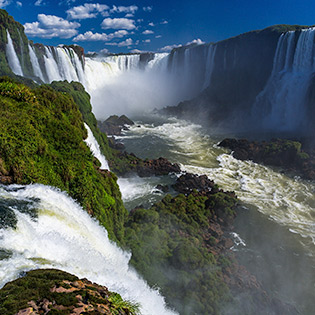
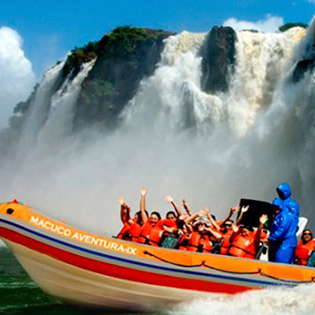
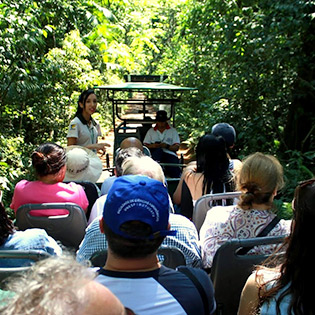
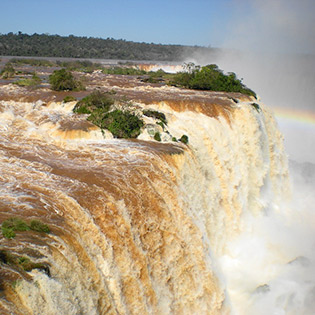
Overview
Considered by many one of the world’s top ten wonders, Iguassu Falls is formed by over 275 separate waterfalls cascading from the top of a horseshoe-shaped canyon in an overwhelming spectacle of sound and color. The falls stretch along the border of Argentina and Brazil, serving as a natural divide between the two countries. Even though 70% of the falls are located on the Argentinean side, most of them face the Brazilian side, which is a main reason why they should be visited from both. Major’s single attraction is the "Devil´s Throat" (Argentinean side), where the largest volume of water falls with a strong, thunderous roar that can be heard miles away. Surrounding Iguassu National Park, originally established to protect the falls, covers 450,000 acres of subtropical forest and harbors a large range of fauna and flora. Adventurous spirits can enjoy different activities in the park including hiking, mountain biking, rappelling, canopy tours, rock climbing and rafting.
Recommended Stay
Two nights
When to go
Best time to see the falls at its full is during the rainy season (November-February) although that may mean cold and dreary days. Dry season (April-July) is characterized by warm and sunny days but water levels will be at their lowest. If you want a compromise, choose March, August, September and October.
Highlights
- The Devil’s Gorge: The world’s mightiest waterfall. (Argentinean side)
- The “Walkways”: Experience a full, panoramic view of the 275+ falls (Brazilian side) and meet the coatimundis, the park’s most popular inhabitants.
- Macuco Safari Tour: Ride a boat up to the edge of the falls and learn about Iguassu National Park while riding a special train through the forest.
- Helicopter Tours: A bird’s eye of the natural wonder. Highly recommended.
- Itaipu Dam: A tour of the world’s largest hydroelectric complex.
Maceio
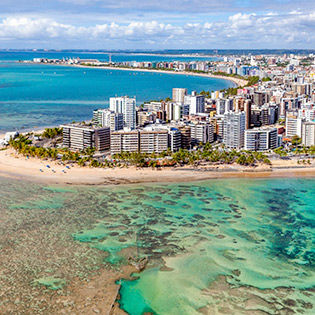
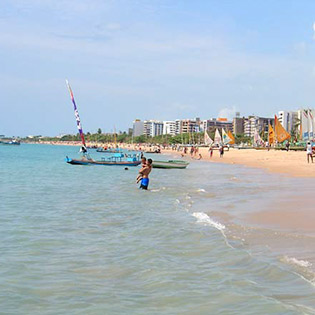
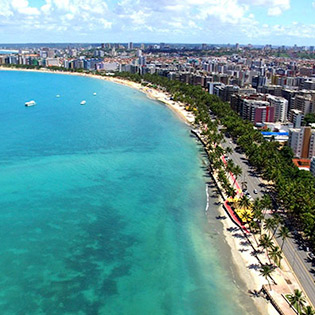
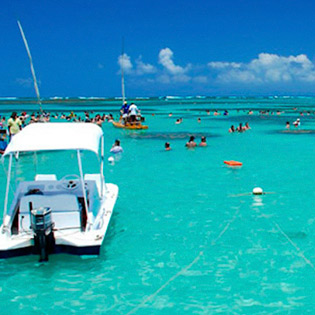
Overview
Maceió is the capital city of the state of Alagoas, on the east coast of Brazil. Its historic center is home to pastel-colored colonial houses Maceio is a small brazilian town in Recife's south area. Its beaches are famous, especially Pajucara, which is very nice for swimming since its waters are trapped between the very coast and the sand bars. Maceio is internationally known by its SPA hotels. Maceió pffers a great coastal ambiance and stands out for its beauty - embedded in palm trees, mangroves and the bright green sea. It also has a remarkable culture, reflected in its arts and crafts, cuisine and customs. Like many places in North-east Brazil, the city has initially thrived on the sugar industry. Nowadays, it has a very good touristic infrastructure with excellent hotels, and has become an important destination for national and international tourists.
Recommended Stay
Three to four nights
When to go
Maceio is a year-round destination. The average temperatures varies very little. Considering humidity, temperatures feel hot for most of the year with a chance of rain throughout most of the year. The hottest months are March, April, and then February. See average monthly temperatures below. The warmest time of year is generally early April where highs are regularly around 89.3°F (31.8°C) with temperatures rarely dropping below 73.4°F (23°C) at night.
Highlights
- Beach going
- Surfing and bodyboarding are popular in Maceió.
- Watch the sunset from Avenida da Paz.
- Snorkeling in Ponta Verde beach (with low tide). Bring your own snorkel, there are usually none for rent.
- The main tourist attraction in Maceió is the Piscinas Naturais in Pajuçara beach, a naturally shallow area in the ocean about one kilometer away from the shore.
- Concerts are very common.
Manaus
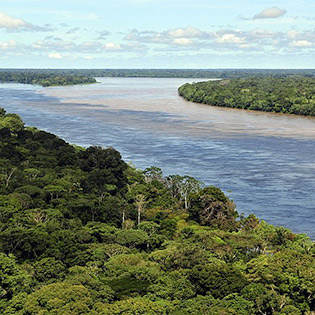
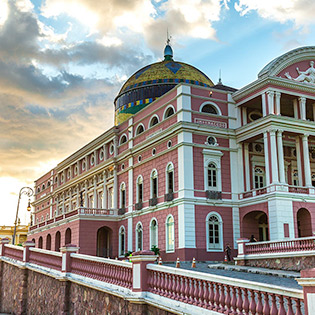

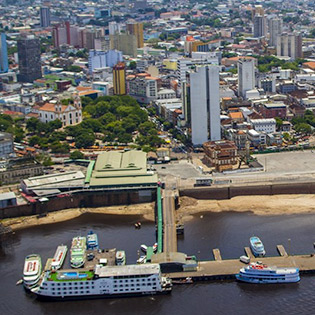
Overview
Manaus, capital of Brazil’s massive Amazonas state, was founded in 1669. During the past century’s rubber boom Manaus became one of the world’s most prosperous cities, and the opulence of those days may still be appreciated viewing the city’s magnificent Teatro Amazonas Opera House. After competition slowed the rubber industry, the city fell into decline. Today, however, Manaus is thriving once again as the Upper Amazon’s transportation hub and distribution center. For visitors daily river cruises and boat transfers depart to jungle lodges situated one to five hours from the city. Once in the jungle, activities include jungle hikes, night outings, piranha fishing, camping, boat tours, and wildlife viewing.
Recommended Stay
Three to four nights
When to go
Due to its proximity to the Equator, Manaus features a tropical climate with hot and humid conditions ‘year round. The rainy season extends from December to May. Nevertheless the area may be visited year ‘round since the rainforest transforms itself from season to season thus creating different possibilities for activities, tours, and flora and fauna observation.
Highlights
- City tour including the famous Opera House and waterfront market
- Meeting of the Waters: Boat tour to see this unique phenomenon, where the Rio Negro and Solimoes Rivers meet to join the Amazon.
- Jungle Experiences: Spend two or more nights in a jungle lodge and participate on jungle treks, boat tours, fishing, wildlife observation, night photographic safaris and much more.
- Jungle cruise: Take a jungle cruise up or downriver and uncover secrets of the mighty Amazon.
Natal
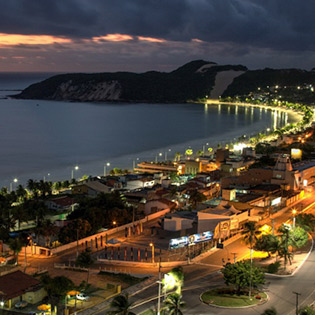
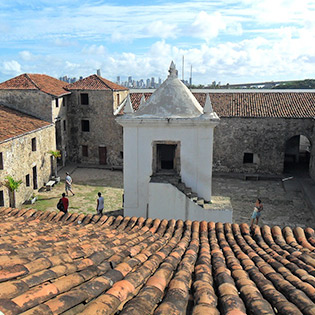
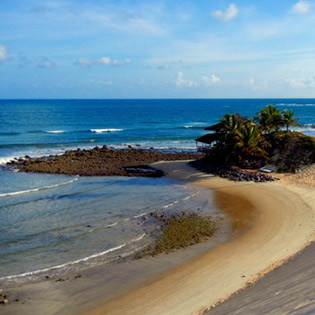
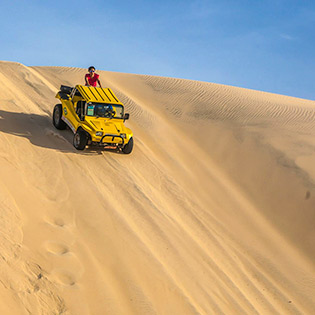
Overview
Sunny, surprising Natal is South America’s easternmost major city. Immense, distinctly Sahara-like sand dunes tower over a series of spectacularly beautiful, palm fringed beaches lining the coast both north and south of the city. A popular beach in town is Miami, so named by U.S. Airmen stationed here in World War II. Natal’s rich history is best preserved in star-shaped Reis Magos Fortress dating to 1598, and is a city tour highlight. Natal’s unique sightseeing excursions feature exciting dune buggy rides to isolated fishing villages and secluded beaches while traversing steep, golden sand dunes. Natal is fast becoming a major tourism destination with scores of new beachfront hotels, and non-stop nightlife in Ponta Negra. Naturally colored sand paintings are a most popular visitor souvenir.
Recommended Stay
Three to seven nights.
When to go
As the rest of the Northeast Brazil, Natal is a year round destination where the sun shines perennially and rainy days are extremely rare. The region is sunny with prevailing sea winds and average year temperatures in the 80s with few variations between seasons.
Highlights
Pantanal.... the Brazilian Serengeti




Overview
The Pantanal was named by UNESCO both a World Biosphere Reserve and a World Heritage of Humanity site. Beyond being the world's largest wetlands, it also contains the greatest biodiversity of animal species in the Americas to the extent that it shelters an abundance of wildlife far surpassing that found throughout the entire Amazon. This region, and unique ecosystem, is home to approximately 670 species of birds, 242 fish species, 110 different mammals and 50 reptiles, in addition to 1,500 plant species. The Pantanal can be accessed through the cities of Cuiaba and Campo Grande, from where overland transfers take visitors to lodges strategically situated throughout the region.
Recommended Stay
Three to five nights.
When to go
Anytime of the year is good to visit Pantanal as different species of animals may be seen during different seasons. As a reference, rainy season extends from November through the beginning of April with the dry season extending from May to October, a perfect time for bird watching as lakes dry out and food becomes plentiful.
Highlights
Parati
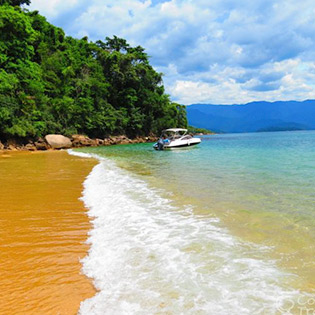
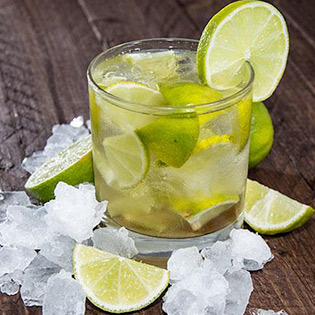
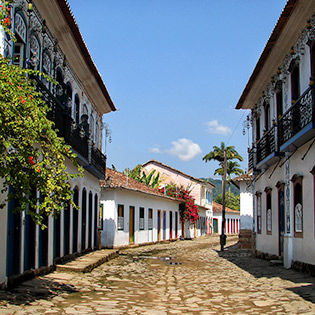
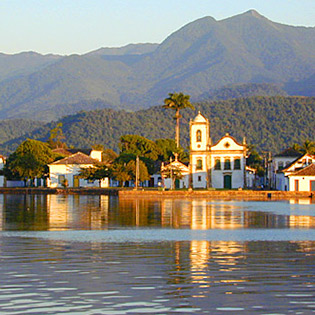
Overview
The small coastal village of Parati is a virtual museum within a tropical paradise. It is located 125 miles southeast of Rio de Janeiro and possesses one of the finest "collections" of classical 18th century Portuguese colonial buildings. Parati is characterized by cobblestone streets and pastel buildings. It has a long pier and small boats are available for day trips to the surrounding islands. In the early 1700's Parati was a major gold shipping port to Portugal. Today it is a major international destination for sophisticated tourists seeking sunshine and spectacular beaches (including snorkeling and scuba) all within a classical architectural setting. Automobile traffic is forbidden inside the city in order to preserve the tranquil ambience.
Recommended Stay
Three to four nights.
When to go
As is true for Rio de Janeiro, Parati (or Paraty) is a year-round destination. The season in south America are opposite North America so that our winters are their summers. Most popular months for travel to the region is October through April. To avoid crowds in Petropolis, do not go during the weekends and the Brazilian holidays. Petropolis has several annual events that you may want to attend: the anniversary of the city (March), the Winter Festival (July), the Cuisine Event (November). Though average air temperatures in Parati are lower than those of Rio, the geographical proximity to Rio makes its climate and weather patterns rather similar.
Highlights
- City tour especially the Historical Center.
- Chill on the Beach in Barra do Corumbê.
- Explore Jabaquara Mangroves.
- Take a boat trip to some of the nearby natural wonders (highly recommended).
- Spend the Day on the Beach of Praia do Cão Morto.
- Saco do Mamanguá is one of Paraty’s most remarkable hidden natural wonder.
- Praia Grande is a main hub for fishermen and boats.
Recife & Olinda
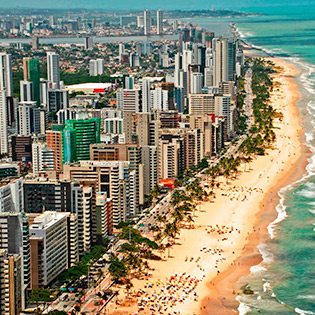
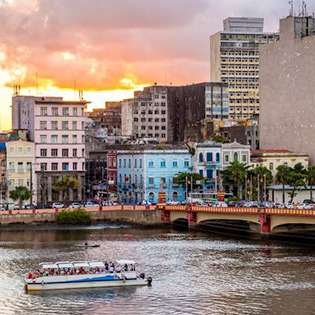
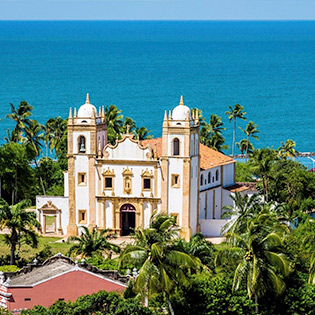
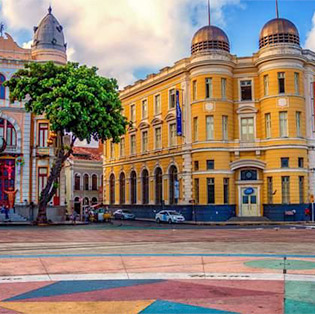
Overview
Located on the northeast coast, Recife was originally built as a port along tropical, palm lined, white-sand beaches. Today Recife is a fast-growing urban area, popularly known as the "Venice of Brazil" because of the numerous waterways within the city. Although not especially appealing to tourism, it serves as gateway to extremely popular tourism sites including Olinda, a UNESCO designated world heritage site founded in 1537 and noted for ornate colonial churches and mansions, and the beach resort of Porto de Galinhas, an hour from Recife, now gaining fame worldwide for its spectacular beaches and excellent conditions for snorkeling, water sports and upscale romantic hotels.
Recommended Stay
Three to seven nights.
When to go
Recife is a year ‘round destination where the sun shines perennially and rainy days are extremely rare. The region is hot and humid with prevailing sea winds and average year temperatures in the 80s with little seasonal variations.
Highlights
- Olinda City Tour: Take a tour of an authentic colonial town, designated by UNESCO as Patrimony of Mankind.
- Beachcombing: Don’t miss Porto de Galinhas, home to some of the world’s most beautiful beaches.
- Traditional shows of African origin.
- The Cuisine: Acclaimed by many as the best in Brazil.
- Schooner Cruises.
Rio de Janeiro
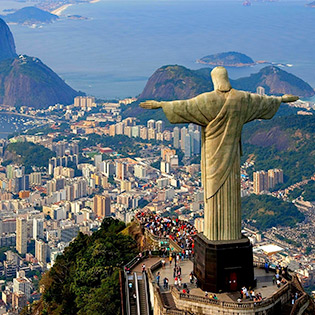
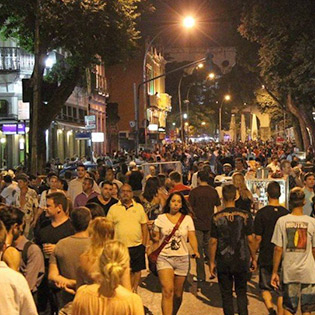
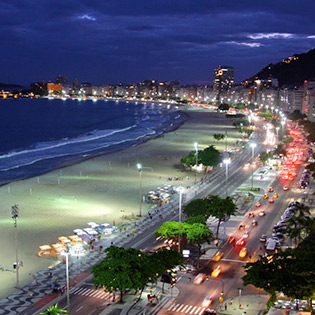
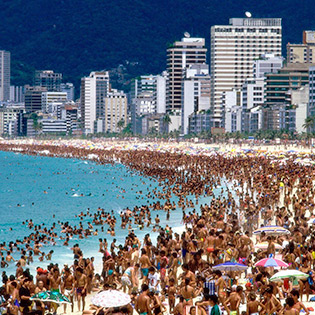
Overview
Blessed with a wonderful natural setting, wedged among towering hills and the sea, watched from above by Christ the Redeemer atop Corcovado Mountain, and surrounded by tropical forests and lagoons, Rio de Janeiro has transformed into one of the world’s most beautiful cities. Known to Brazilians as the “Cidade Maravilhosa” (Marvelous City), Rio offers world-class hotels, restaurants, shopping, and varied active sports. Beaches are an integral part of the Rio’s envied lifestyle, highlighted by two of the world’s most famous -- Copacabana and Ipanema. The marvelous city’s pulsating nightlife ranks among the best in the world.
Recommended Stay
Three to seven nights.
When to go
Although Rio is a year ‘round destination, it is better to avoid the winter (June-August) since temperatures may drop into the 50s and rainfalls are possible. Summer (December-March) is the warmest time of the year with temperatures consistently reaching the 90s. Visitors should also be aware Carnival in Rio is a very busy time and advance reservations are absolutely essential.
Highlights
- Sugar Loaf: Ride the cable car to the top of famous Sugar Loaf Mountain.
- Corcovado Mountain: Cog-wheel train to the famous Christ statue that presides over Rio.
- Colonial Cities: Visit history-drenched, colonial Petropolis and/or Paraty.
- Rio by Night Tour: Enjoy a succulent dinner at a typical Churrascaria followed by a folkloric show of traditional samba song and dance.
- Schooner Cruise: Best way to enjoy Rio’s surrounding bays and islands.
- Tijuca Forest: On foot and by jeep, a rewarding visit to the world’s only national park within a major city.
- Favela Tour: An insightful experience into Rio’s inner city.
Sao Paulo
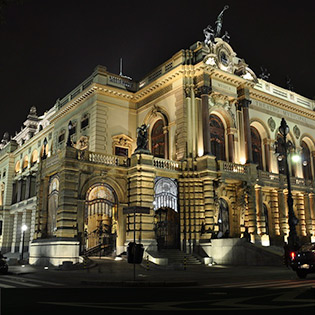
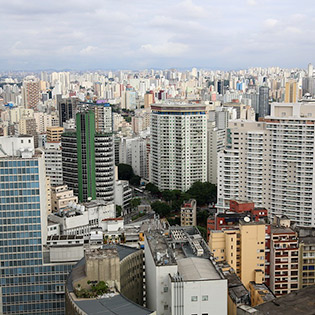
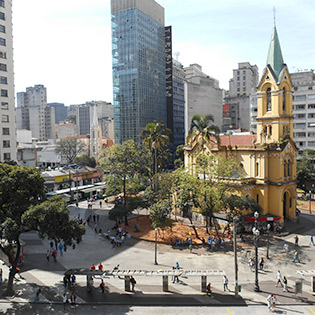

Overview
This humongous metropolis is the world's fastest growing city, destined to become the planet's largest. Sao Paulo is not only the country's commercial and financial center but also South America’s most important cultural hub. The city features towering skyscrapers, astonishingly modern architecture, abundant hotels, impressive parks, the largest Japanese colony outside Japan, and three jet airports. Famous worldwide for its lively nightlife, the city offers over 25,000 restaurants, grills, bars, scores of nightclubs and cabarets, and over 50,000 taxis on the streets at all hours.
Recommended Stay
Two nights
When to go
Sao Paulo has a pleasant, moderate, year round climate with highs in the mid 70s to low 80s and lows in the 60s.
Highlights
Salvador Bahia
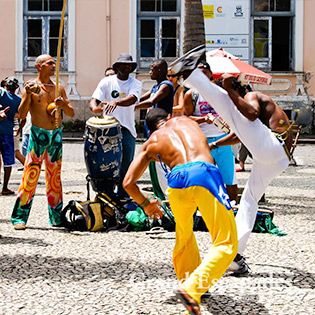
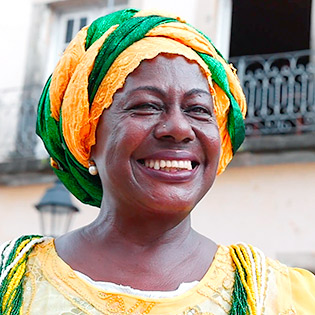
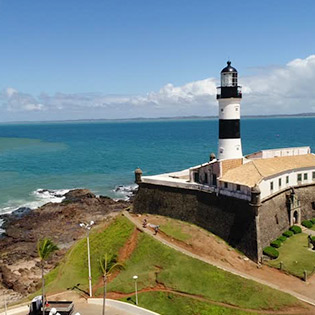

Overview
Home to the largest, best-preserved colonial quarter in the Americas, Salvador (pop. 2.5 million) was founded in 1536 and soon became Brazil’s most important port and first capital. For over two centuries, Salvador thrived on the flourishing commerce of sugar cane, gold and diamonds, which resulted in the building of several Baroque churches, ornate mansions, and plazas. During this time, prompted by the increasing labor demand, African slaves were brought in to work the plantations. They brought with them their rich culture and traditions that still survive throughout Brazil, but mainly in Bahia, where the influence permeates all aspects of life - from exotic cuisine to spectacular Capoeira ritualistic dances, to rich musical heritage, to the spiritual Candomble religion. Today Salvador offers a spicy mixture of modernity and tradition, an idyllic place to relax on its inviting beaches as well as a cultural enclave embodying the very spirit of Brazil.
Recommended Stay
Three to five nights.
When to go
Salvador is a typical hot and moist tropical city with an average year temperature of 76ºF and very slight monthly thermal variations, which makes it a perfect place to visit anytime of the year. The city’s favored oceanside location guarantees a soft breeze constantly blows, making the weather truly pleasant.
Highlights
- Pelourinho Walking Tours: Stroll Salvador’s lively, colorful colonial quarter.
- Schooner Tours: A full day excursion around beautiful All Saints’ Bay.
- Cachoeira Full-day Tour: Travel back in time to the Brazil of yesteryear —traditional markets, colonial flavor, cigar making, and a special meeting With the centuries-old Boa Morte Sisterhood.
- Traditional Shows: Watch and learn about Capoeira and other spectacular dances of undeniable African origin.
- Mao de Santo: Have your future told by a local spiritual leader from the Candomble religion.
- Olodum: Attend a popular rehearsal of this worldwide famous drum ensemble.
- Carnival: Simply, one of the largest celebrations on Earth.

